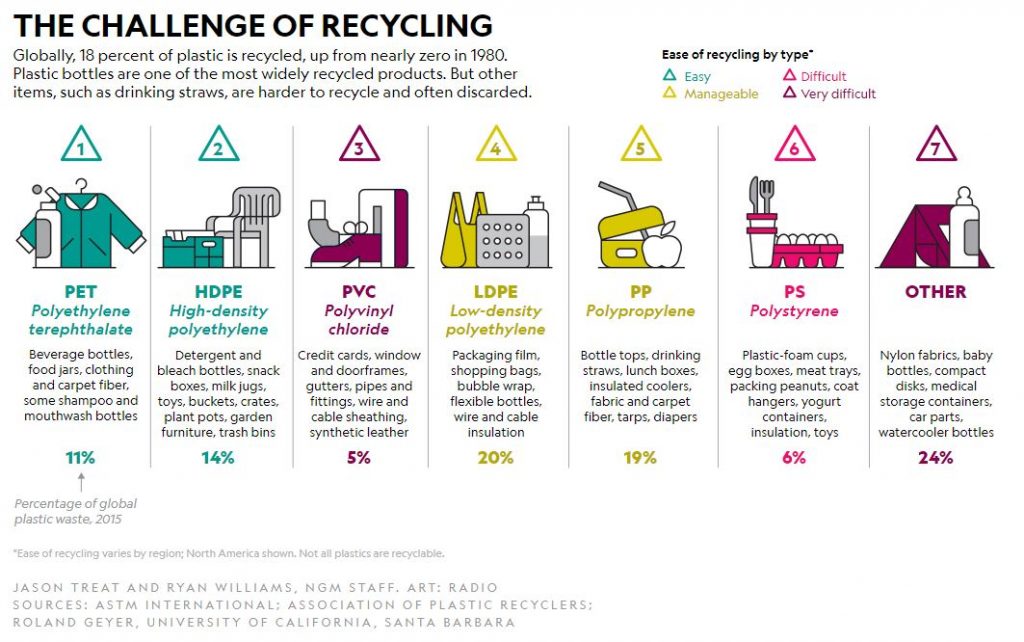Sales of plastic took off in 1950’s, due to the shortage of natural materials in the World War II. Plastics are in use in all sectors of industry, the largest usage being in packaging materials. Asia produces half of the worlds plastic with China producing 29% of those plastics.


About Plastics …
When plastic was first produced it had many positive uses including nylon parachutes and as a replacement to ivory. This was a great use of plastic which help to reduce the need for ivory hurting in turn helping to save many elephants. Yet, this changed when plastic manufacturing starting producing single use plastics. Many items in production were single use, including tableware, which became advertised as ‘throw way’ living.
Around 40% of the 448 million tons of plastic produced in 2015 were single use products, with Coca-cola admitting they create 128 billion plastic bottles a year. Growing economies, such as those in Asia, have seen a surge in plastic packaging. These countries often have undeveloped garage collections which means a large percentage ending up in the ocean. The Pasig river, in the Philippines, has as much as 72,000 tons of plastic flowing through each year. This river has been biologically dead since 1990 due to pollution. Fortunately, due to efforts to revive the river, large fish are now thriving there, but, there is still a lot more work that needs doing.
Due to the plastic going into the ocean this is affecting millions of marine animal yearly, with it affecting almost 700 species including many endangered animals. This animals mat be injured internally by ingesting the plastic thinking they are food. Microplastics are the worst for this as all marine animal can confuse these for food. Animals also get injured when catch in the plastic, sometimes living with these for years causing issues with growth. However, often these animals die from their injuries.
How to Help …
Here are some ways that we can help:
- Reduce plastic usage at home, including plastic tableware and straws.
- Reuse plastic containers for leftovers and pack lunches.
- Purchase a reusable bottle and mug to take out with you to stop take away cups and bottles.
- Make or purchase reusable shopping bags, one carrier bag can take up to 1,000 years to degrade.
- Purchase boxed or refillable products to reduce plastic packaging.
- Matches are a much better option than the disposable plastic lighters.
- Buy fresh instead of frozen, this often has less packaging.
- Try making your know fruit juice instead of purchasing in plastic bottles.
- Using your local milk delivery, this often means reused glass bottles instead of single use cartons.
- Give up chewing gum, this is literally made from plastic.
- Choose bottles with natural corks instead of the modern plastic screw tops.
We can all make a difference by just changing a few things within our lifestyles, so why not try it?
https://www.nationalgeographic.com/magazine/2018/06/plastic-planet-waste-pollution-trash-crisis/